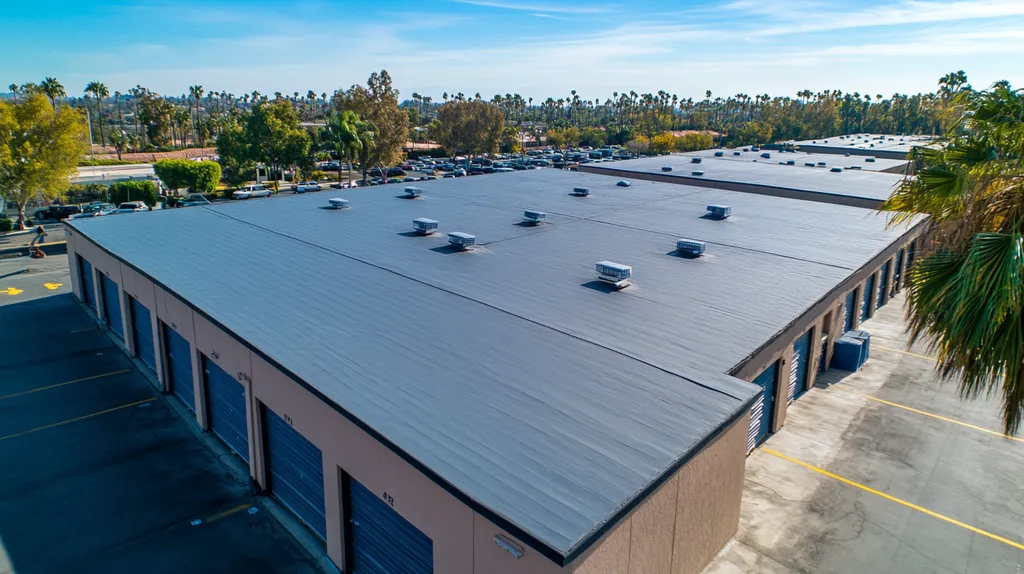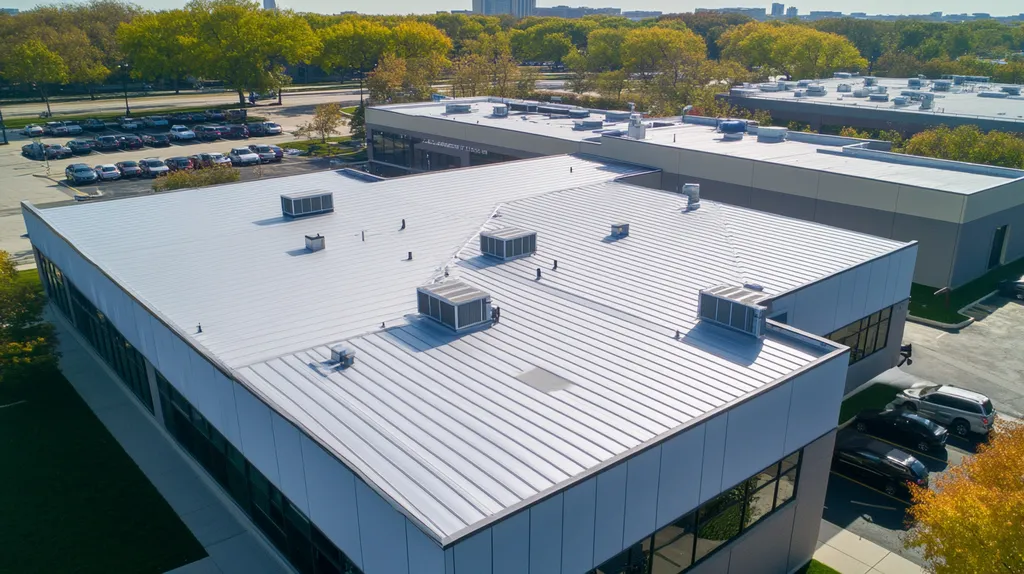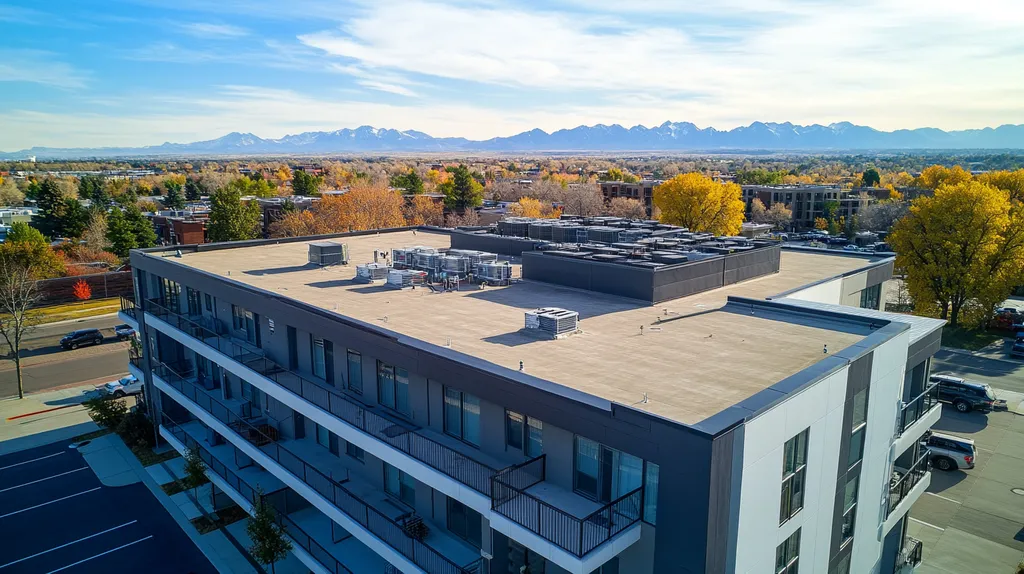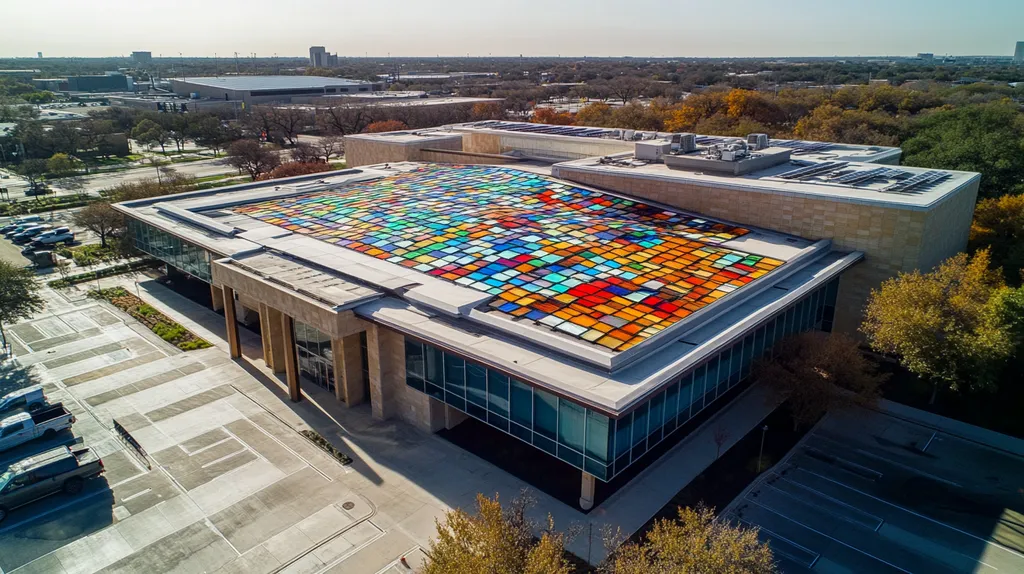Commercial roof failures cost U.S. businesses over $2.5 billion annually in repairs, yet 85% of these incidents could be prevented through proper maintenance planning. Recent industry studies show that implementing a preventive maintenance program can extend roof lifespan by up to 50% while reducing emergency repair costs by 40%.
For facility managers, developing an effective maintenance strategy requires careful consideration of performance factors, financial implications, compliance requirements, and risk management protocols.
This comprehensive guide provides actionable solutions for implementing a preventive maintenance plan that protects your roofing investment while ensuring regulatory compliance and operational efficiency.
SECTION 1: PERFORMANCE FACTORS
Preventive maintenance is crucial for maintaining the integrity of commercial roofs. Each year, roofing failures can lead to costly repairs that disrupt business operations. Industry research shows that a well-executed preventive maintenance plan can extend a roof’s lifespan by as much as 50%. Facility managers must prioritize the evaluation of their roofs’ performance factors to avoid unexpected expenses. This section covers vital assessments, including roof system efficiency, insulation condition, and water resistance testing to enhance preventive maintenance initiatives.
Roof System Efficiency Evaluation
Assessing roof system efficiency is essential for facility managers aiming to optimize performance. This evaluation considers factors such as energy loss and thermal efficiency, highlighting how certain roofs can lead to increased heating and cooling costs. For example, roofs with significant thermal bridging can have a direct impact on a company’s bottom line.
To conduct a thorough efficiency evaluation, facility managers should schedule regular inspections that include thermal imaging to uncover areas of heat loss. This proactive monitoring allows for timely repairs or replacements, preventing costly issues from arising. Failing to perform these evaluations can lead to unanticipated expenses that could otherwise be avoided.
Additionally, the integrity of the roof membrane is crucial for system efficiency. Worn or damaged membranes may allow for moisture penetration, leading to deterioration of the underlying structure. Through comprehensive evaluations, vulnerabilities can be identified before they escalate into major repair needs.
Key Action Items
Insulation Condition Assessment
Insulation plays a critical role in maintaining the efficiency and overall performance of commercial roofs. Conducting an insulation condition assessment helps identify issues such as moisture intrusion, degradation, and gaps that can significantly diminish thermal performance. Without this evaluation, buildings may experience temperature fluctuations and escalating energy costs.
Facility managers should make routine assessments a priority to ensure insulation effectiveness. Tools like moisture meters can effectively detect trapped moisture within insulation layers, which should be addressed immediately to prevent larger repair issues from developing.
Moreover, assessing insulation conditions can reveal areas needing improvements or upgrades. Aging or inadequate insulation impacts energy efficiency, which ultimately affects operational costs. Addressing insulation concerns early can lead to significant long-term savings.
Key Action Items
Water Resistance Testing
Water resistance is vital for the longevity of any commercial roof. Inadequate water management can result in serious damage, including leaks and structural problems. Conducting water resistance testing is essential to determine how well a roof can handle moisture and identify areas that require attention.
Methods like water ponding tests and flood testing can uncover potential weak points in the roof. Regular testing allows facility managers to tackle issues proactively, preventing costly repairs and operational disruptions.
Immediate measures should be taken if weaknesses are detected during testing, which could involve exploring repair options or addressing drainage issues. Consistently monitoring water resistance not only safeguards the roof’s structure but also supports the overall longevity of the facility.
Key Action Items
SECTION 2: FINANCIAL CONSIDERATIONS
Understanding the financial implications of commercial roofing is crucial for effective facility management. When maintenance is delayed, it can lead to costly repairs and even premature roof replacements. Studies indicate that regular maintenance can extend roof life by 30% or more, resulting in significant savings for property owners.
Cost-Benefit Analysis of Maintenance
A detailed cost-benefit analysis highlights the importance of preventive maintenance. Simple, routine inspections and minor repairs typically cost less than significant repairs or replacements that stem from neglect. For example, addressing a small leak early may only cost under $500, while allowing it to worsen could escalate expenses to over $5,000.
Additionally, regular maintenance contributes to energy efficiency. A well-maintained roof can reflect sunlight effectively, leading to lower cooling costs and reduced utility bills, further emphasizing the financial benefits of staying proactive.
Moreover, maintaining a documented maintenance plan can enhance property value. This documentation makes properties more appealing to potential buyers and could positively influence commercial lease agreements.
Key Action Items
Budgeting for Repair and Replacement
Effective budgeting is essential for the ongoing maintenance of commercial roofs. Facility managers should designate a specific percentage of the overall building maintenance budget toward roofing needs. Typically, allocating about 10% of the total annual budget for preventive roof maintenance is a solid guideline.
Setting aside funds for unexpected repairs is also a smart strategy. Having a contingency fund can ease financial burdens during emergencies, allowing for prompt responses to roof issues without interfering with other operational budgets.
Employing a roofing asset management system can also assist in forecasting when repairs or replacements will be necessary based on historical performance and environmental impacts, ensuring better financial planning and minimizing unpleasant budget surprises.
Key Action Items
Identifying Cost-Effective Solutions
Finding cost-effective roofing solutions calls for thorough research and strategic planning. One effective strategy is to investigate alternative materials and technologies that promise durability while minimizing long-term costs. For instance, single-ply membranes often present an affordable and quick installation option compared to traditional roofing systems, while delivering reliable performance.
Establishing long-term relationships with reputable roofing contractors can also yield savings. Such partnerships might provide access to discounted rates or bundled services, leading to better overall financial outcomes. Regular collaboration with contractors enables tailored maintenance schedules specific to the roof’s requirements.
Incorporating energy-efficient upgrades, like reflective coatings, can also lower energy costs and enhance the roof’s lifespan. While these improvements may require a higher initial investment, they frequently result in long-term operational savings.
Key Action Items
SECTION 3: COMPLIANCE REQUIREMENTS
Compliance with regulatory standards is essential for the durability and effectiveness of commercial roofs. Failing to meet these standards can lead to expensive repairs and even legal challenges. For example, companies that neglect environmental regulations may incur hefty fines and suffer reputational damage. Facility managers need a solid understanding of compliance requirements to craft an effective preventive maintenance plan.
Regulatory Adherence and Standards
Every commercial roofing system must comply with various regulatory standards, which differ based on location. These regulations typically cover structural integrity, fire safety, and energy efficiency. For instance, guidelines from the International Building Code must be followed for both new installations and existing roofing systems.
If these standards are not met, the safety of the building is at risk, potentially leading to penalties from regulatory agencies. Regularly consulting local regulations allows facility managers to ensure their roofs align with expected standards.
Routine inspections can identify compliance gaps early, enabling timely corrective actions to ensure stakeholder confidence. Staying updated about regulatory changes through industry associations can provide valuable resources and insights into roofing standards.
Key Action Items
Warranty Compliance Monitoring
Most roofing systems come with specific warranties that include maintenance requirements. Failing to adhere to these stipulations can void the warranty, leading to significant out-of-pocket repair costs. Facility managers should meticulously document maintenance work to fulfill warranty criteria.
For instance, if a roofing manufacturer mandates annual inspections that go unrecorded, any future claims may be denied. Consistently recording maintenance helps ensure compliance with warranty conditions.
Establishing a scheduled maintenance plan is vital for meeting these warranty requirements. Involving qualified roofing contractors can further support warranty compliance, as they often understand the nuances of warranty stipulations.
Key Action Items
Local Building Code Compliance
Local building codes dictate essential factors for the installation and maintenance of commercial roofs, such as material standards, structural loads, and drainage systems. Ignoring these codes can lead to serious legal issues and construction delays. Facility managers must be well-informed about local codes to avoid potential pitfalls.
Many jurisdictions require permits for roofing work, making compliance essential before starting any maintenance or repairs. Neglecting to follow local codes could result in fines or the need for costly rework.
Regular code reviews ensure that roofing practices align with current standards, which can change over time. Collaborating with local building officials can provide insights into the latest requirements for roofing compliance.
Key Action Items
SECTION 4: RISK MANAGEMENT
Effective risk management is vital for preserving the durability and functionality of commercial roofs. Property owners face significant financial repercussions from sudden leaks or structural failures that disrupt operations. Industry reports indicate that a single roofing failure can lead to extensive repair bills, interruptions in productivity, and even legal liabilities. To mitigate these risks, priority must be given to identifying potential failure areas, assessing weather vulnerabilities, and establishing emergency response protocols.
Identifying Potential Failure Areas
The first step in managing roofing risks involves identifying areas prone to failure. Common trouble spots may include seams, flashings, and roof penetrations where vulnerabilities are likely to develop. Regular inspections are crucial, as they reveal wear and tear before they can escalate into larger problems.
Facility managers should focus on high-traffic areas and spots susceptible to water pooling. These locations often experience accelerated material deterioration, increasing the risk of leaks and expensive repairs. Implementing a routine inspection schedule can help identify these vulnerabilities early on.
Recording any observed failures or damage is important for tracking recurring issues over time. This documentation influences decisions regarding future repairs or replacements and helps assess the reliability of specific roofing materials.
Key Action Items
Assessing Weather-Related Vulnerabilities
Weather significantly impacts the integrity of commercial roofs, particularly during storms and extreme temperatures. Heavy rain, wind, or snow can exacerbate existing weaknesses, creating urgent repair needs. It is essential for facility managers to evaluate the roof design and materials in relation to local weather patterns.
For instance, flat roofs located in regions with heavy snowfall require effective drainage systems to prevent accumulation, which may lead to leaks. Utilizing weather-resistant materials is critical, but these should be matched to the specific climate challenges faced.
Additional features like roof gardens or high-performance insulation can provide extra protection against severe weather while enhancing the building’s overall efficiency and sustainability.
Key Action Items
Developing Emergency Response Protocols
Emergency preparedness is critical in managing roofing risks. Extreme weather conditions can cause immediate failures, necessitating prompt action to prevent further damage. A rapid response is vital, as delays can lead to costly repairs and extended downtime.
Facility managers should develop a comprehensive emergency response plan that outlines immediate steps to take during a roofing failure. This plan must include contact information for roofing contractors and personnel responsible for emergency actions.
Training staff on these emergency procedures will ensure an effective response when issues arise. Regular practice drills can reinforce these actions, mitigating panic during real emergencies. Additionally, maintaining a contingency fund specifically for roofing issues allows for quicker repair response when needed.
Key Action Items
SECTION 5: OPERATIONAL PROCEDURES
Operational procedures are essential for safeguarding the longevity and performance of commercial roofs. Failure to implement effective maintenance strategies can lead to costly repairs, leaks, and potential damage to valuable assets. Alarmingly, nearly 30% of commercial roofs are replaced prematurely due to neglect. This section will focus on crucial operational procedures, including routine inspection schedules, preventive maintenance program development, and protocols for repairs and replacements.
Routine Inspection Schedules
Establishing a regular inspection schedule is crucial for catching issues before they escalate into bigger problems. Inspections should occur at least twice a year, ideally during spring and fall when conditions are more stable. Facility managers must focus on vulnerable areas, including seams, flashing, and drainage systems, during these inspections.
Utilizing trained professionals for inspections ensures thorough assessments, as they can spot signs of wear, like blistering or pooling water. Documenting the results of each inspection creates a vital reference for necessary repairs and can be essential for future warranty claims.
In addition to biannual inspections, follow-up assessments should be made after severe weather events to address any newly formed vulnerabilities quickly. Advanced technologies, like drones or infrared thermography, can enhance inspection processes by thoroughly evaluating hard-to-reach areas while keeping personnel safe.
Key Action Items
Preventive Maintenance Program Development
Developing a solid preventive maintenance program is vital for extending the lifespan of a commercial roof. This program must outline a clear strategy for regular upkeep while taking into account the specific materials and conditions of the roof. Tailoring the program to address the facility’s individual needs is crucial.
Documenting maintenance tasks and schedules fosters accountability and ensures that no important task is overlooked. Routine activities may include cleaning gutters, securing loose flashing, and removing debris that could impede drainage.
Training staff in relevant preventive maintenance techniques enables them to spot potential issues quickly. Direct communication with roofing contractors helps maintain up-to-date insights into material performance and promotes adaptability in the maintenance program as conditions change.
Key Action Items
Implementing Repair and Replacement Protocols
Setting clear protocols for repairs and replacements is essential for effective roof maintenance. When problems arise from inspections or are reported by staff, a systematic response ensures timely resolution, minimizing disruption and safeguarding the building’s structural integrity.
A tiered approach can help classify repairs by urgency; for example, emergency repairs could encompass severe leaks, while preventive measures might include minor seam repairs. This classification aids in prioritizing resources and planning actions accordingly.
Whenever repair costs approach those of a full roof replacement, conducting a thorough evaluation is critical. Management should consider the roof’s age, material type, and historical performance. Detailed financial analyses can support informed decisions regarding future maintenance and replacements.
Key Action Items
SECTION 5: OPERATIONAL PROCEDURES
Establishing effective operational procedures is essential for ensuring the longevity and functionality of commercial roofs. Neglecting maintenance can result in severe consequences, including leaks, structural damage, and loss of valuable assets. Alarmingly, studies indicate that nearly 30% of commercial roofs are replaced prematurely due to insufficient care. This section examines critical operational procedures, highlighting routine inspections, preventive maintenance program development, and protocols for repairs and replacements.
Routine Inspection Schedules
Establishing a routine inspection schedule is essential for identifying potential issues before they escalate into costly problems. Inspections should be conducted at least twice a year, ideally during spring and fall when weather conditions are stable. During these inspections, facility managers must focus on critical areas like seams, flashing, and drainage systems that are particularly vulnerable to wear and damage.
Utilizing trained professionals for these assessments guarantees a thorough evaluation. They are well-equipped to identify signs of wear such as blistering, cracking, and pooling water. Documenting the inspection results creates a useful reference for necessary repairs and is crucial for any future warranty claims.
Beyond biannual inspections, conducting follow-up assessments after significant weather events, such as heavy rains or storms, is equally important. This proactive approach helps address any new vulnerabilities swiftly before they result in major damage.
Leveraging advanced technology, such as drones or infrared thermography, can enhance inspection processes. These tools enable comprehensive evaluations of hard-to-reach areas while keeping personnel safe.
Key Action Items
Preventive Maintenance Program Development
Developing a robust preventive maintenance program is crucial for extending the lifespan of a commercial roof. This program should clearly outline regular upkeep strategies while considering the specific materials and conditions of each roof. Customizing the program to meet the facility’s unique needs ensures effectiveness.
Key to this program is the documentation of maintenance tasks and schedules. This fosters accountability and helps ensure no critical tasks are overlooked. Regular activities might include cleaning gutters, securing loose flashing, and removing debris that could obstruct drainage.
Training staff in appropriate preventive maintenance techniques is essential. Knowledgeable employees can swiftly identify potential issues and know when to escalate concerns to roofing professionals, reducing response times and risk of damage.
Maintaining open communication with roofing contractors can enhance the maintenance program. Strong relationships provide timely insights into material performance and innovations that support roof longevity, enabling adaptations as conditions change.
Key Action Items
Implementing Repair and Replacement Protocols
Clear protocols for repairs and replacements are vital for effective roof maintenance. When issues are discovered during inspections or reported by staff, a systematic response plan ensures timely resolutions, reducing disruption and protecting the building’s structural integrity.
A tiered approach can classify repairs based on urgency; for instance, emergency repairs might involve severe leaks, while routine measures could encompass minor seam repairs. This classification aids in prioritizing resources and planning actions.
If repair costs approach the total expenses for roof replacement, thorough evaluations should be conducted. Management must consider the roof’s age, material type, and performance history, while detailed financial analysis can support informed decisions regarding future maintenance or replacements.
It is critical to document all repair and replacement activities for warranty purposes and future planning. Maintaining a comprehensive log helps track the roof’s history, guiding maintenance decisions and predicting when a replacement may be necessary.
Key Action Items
The Bottom Line
With commercial roof failures costing businesses over $2.5 billion annually, implementing comprehensive preventive maintenance plans is no longer optional—it’s imperative for operational continuity and asset protection.
Research demonstrates that proper maintenance extends roof lifespan by up to 50% while reducing emergency repair costs by 40%, yet 85% of roof failures stem from inadequate maintenance programs.
Success requires a strategic approach integrating performance monitoring, financial planning, compliance management, and risk mitigation protocols.
By following the actionable guidelines outlined in this resource, facility managers can develop maintenance programs that protect their roofing investments while ensuring regulatory compliance and operational efficiency.
The time to act is now—before minor issues escalate into major failures that threaten business operations and the bottom line.
FREQUENTLY ASKED QUESTIONS
Q. How does performance affect commercial roofs?
A. Performance factors like insulation and system efficiency significantly influence roofing lifespan. Regular assessments help avoid unexpected expenses from failures.
Q. What financial benefits does preventive maintenance for commercial roofs offer?
A. Preventive maintenance saves money by avoiding costly repairs and extending roof life. Routine upkeep enhances property value and reduces energy expenses.
Q. What compliance requirements apply to a commercial roof?
A. Compliance includes adhering to local building codes and manufacturer warranty terms. Regular inspections ensure that these standards are met to avoid penalties.
Q. How can I identify risk areas in my commercial roof?
A. Regular inspections of seams, flashings, and high-traffic areas are crucial. Documenting issues helps track vulnerabilities and informs future maintenance decisions.
Q. What operational procedures enhance commercial roof maintenance?
A. Establish routine inspections and a preventive maintenance program. Schedules for repairs ensure timely responses to issues, helping maintain roof integrity.
Q. How does weather impact commercial roof maintenance?
A. Weather affects roof integrity; extreme conditions can exacerbate issues. Assessing roofs for weather vulnerabilities is essential for preventing damage and maintaining functionality.
Q. What are the signs my commercial roof needs replacement?
A. Signs include extensive leaks, recurring issues, and high repair costs. An evaluation of age, material integrity, and performance history guides replacement decisions.











